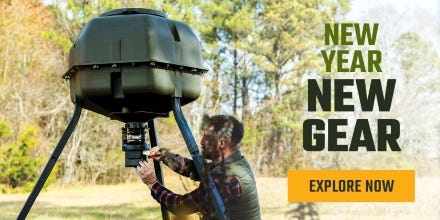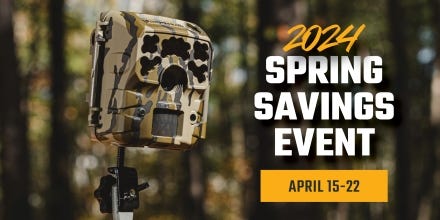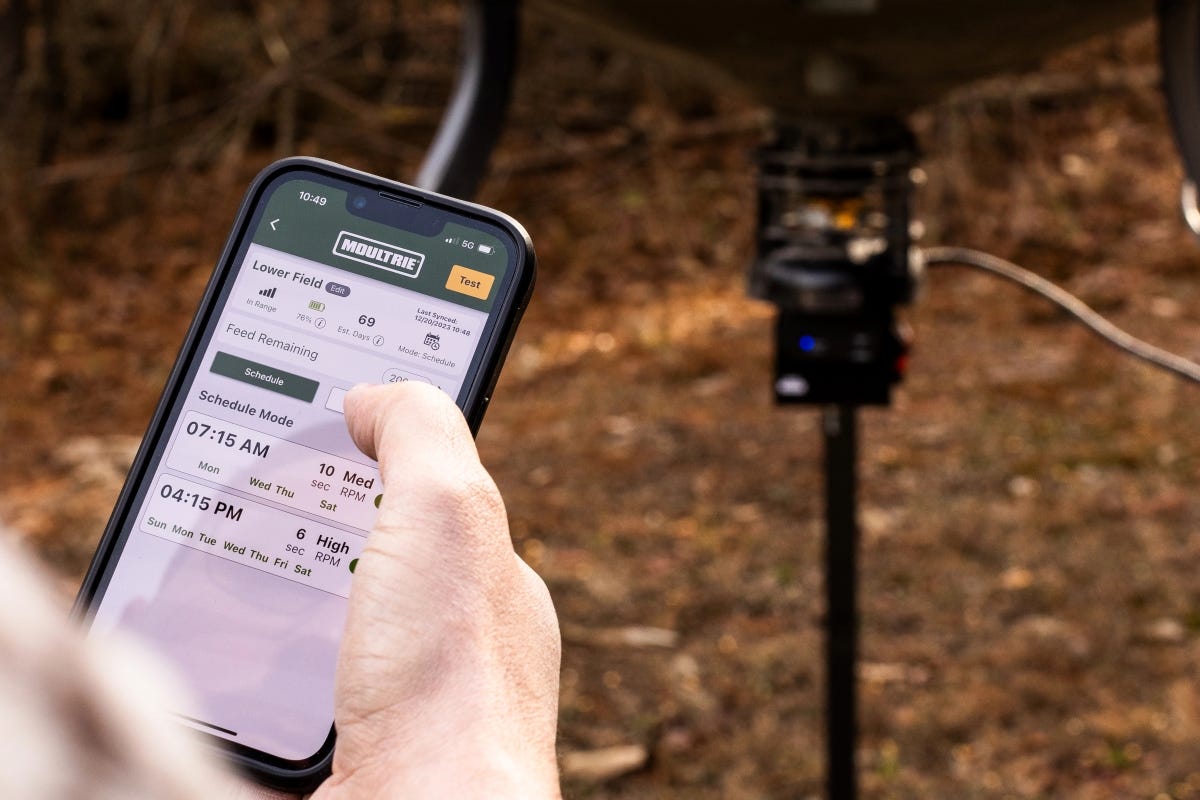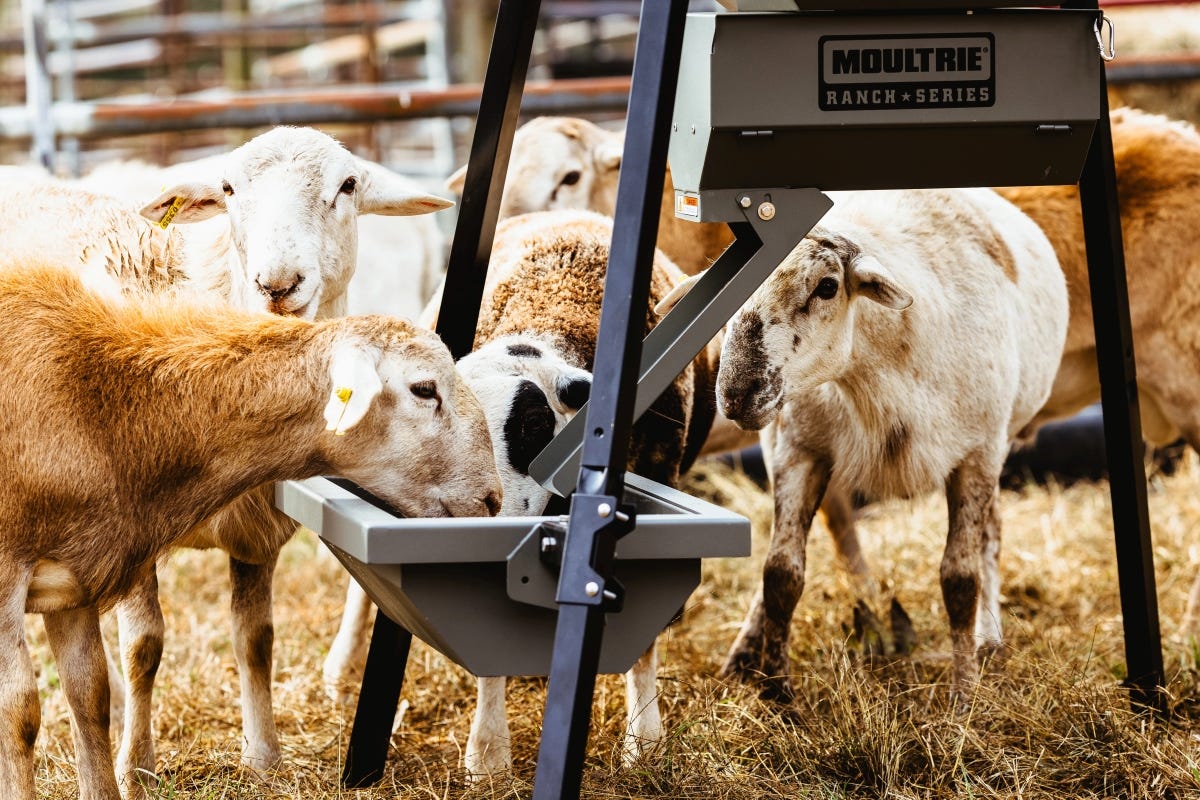- Feb 21, 2020
Guide To Cellular Trail Cameras
Long before advanced digital photography became available to the masses, Dan Moultrie developed the first trail camera with a standard 35-millimeter flash camera and plastic housing. The bright flash would illuminate whatever triggered the camera to take a photo at night, and the user would have to collect the roll of film and have it developed to see what walked in front of the camera.
Since then, trail cameras have come a long way. First, they are all built with digital cameras, which allow the camera to take and store thousands of photos on one SD card. Then, they developed wireless capabilities, allowing users to collect images from a distance. Today, cellular game cameras allow hunters to receive the pictures via the Moultrie Mobile app on their smartphone. The evolution of trail cameras hinges on the differences in how each camera transmits images:
- A wireless game camera typically uses a wifi signal to send the images. With this type of camera, if you stray too far from the signal, you'll lose the connection. This range means you need to be within a close proximity of the modem to receive the images.
- A cell game camera uses a data plan and a SIM card, like your cell phone, to send photos to your device or email. They require at least a few bars of cellular reception to send your images to your phone or computer, no matter where you are. The number of images you can send from the trail camera to your phone varies based on your plan. However, you do not need to have the same cell service provider for your camera as you do for your phone.
While these cellular trail cameras make image collecting a breeze, the wide array of features can make choosing one feel overwhelming. Knowing how a cellular camera works, what features they have, how they differ from each other and how to effectively use one will help influence your decision. In this guide, we'll provide all the information you need to select the perfect cellular game camera for your hunting spot.
How Cellular Trail Cameras Work
Cellular cameras capture an image just like a traditional trail camera and then transmit the image to a server via 4G cellular connectivity. With Moultrie Mobile, you choose between AT&T and Verizon service.

A cell camera will need a monthly data plan like your cell phone, to send photos to your device or email. There are several tiers of data to choose from. You can purchase as little as 100 images per month all the way up to 12,000 images. If your hunting area has good cell reception then you can operate a cellular trail camera. Moultrie Mobile cellular trail cams operate on the Verizon and AT&T 4G networks. However, you do not need to have the same cell service provider for your camera as you do for your cell phone.
What to Look for in a Cell Trail Cam
A cellular hunting camera uses a Passive Infrared (PIR) sensor to detect heat differences in ambient air and warm-blooded animals. When the PIR sensor is triggered the camera takes a picture and then sends it to a cloud-based server where it is accessible 24/7 via an app or online account. Here are some of the most important features to consider when shopping for a cellular game camera:

Picture Quality
The number of megapixels a camera uses is a decent indicator of quality, but it shouldn't be your only criterion. Some brands can have high megapixel counts but use other low-quality components that reduce the image quality. Instead, look at sample images from the camera — they should be clear, with good contrast and color. However, remember that aspects like flash, night vision and environmental conditions can affect the quality.

PIR Sensor
The PIR sensor in a hunting camera reads the difference in temperature between the ambient air and an animal walking in front of the camera. Be sure to find a camera that has adjustable PIR settings.
- Detection zone: The area and distance the PIR sensor can "see" and detect an animal.
- Delay Settings: An adjustable setting that delays the PIR sensor from triggering again. This is useful when using a camera on a feeder where you don't want to get a lot of images of the same deer feeding.
- PIR Sensitivity: Allows the user to adjust PIR sensitivity. If a user receives a lot of images without game in them, turning the PIR sensitivity down can reduce or eliminate those blank photos.

Flash
There are three main flash types for trail cameras that allow for different levels of quality. These include:
- White flash: This flash looks similar to that of a regular camera. They are great for photos at night and allow you to achieve color images, even in the darkest environments. The downside to this type of flash is that it's more likely to spook certain animals, like deer.
- Long-Range Flash: This type of flash uses infrared technology to take photos, giving off a low red glow from the infrared LEDs. Although low glow game cams create a visible light, it doesn't light up the woods like a white flash.
- Invisible Flash: This kind of IR flash emits no visible light and but brightly illuminates the subject in the photo. A black flash is invisible to the animals and people in front of it — making it ideal for game and monitoring trespassers.
Durability
A trail camera is exposed to the worst elements for most of its lifetime, so you need one that is durable. Most use plastic enclosures to protect the electronics from moisture.
Battery Life
Cellular trail camera battery life can vary based on settings and design. Lithium batteries work better in exceptionally cold climates, where alkaline batteries can freeze and stop working.
One option to help eliminate battery concerns is to use a camera with a solar panel. Solar panels can reduce how often you need to visit your camera to change batteries and are more eco-friendly.
Water Resistance
The camera will be out in the elements constantly, so keeping water out of the electronic component is vital. Most cameras will have an ingress protection (IP) rating listed, which identifies an enclosure's ability to keep liquids and solids out.
The water-resistance of your camera can influence where you place it. An enclosure with low water resistance may be better in a covered space, away from heavy rain or snow.

Security
It's essential to be able to protect your trail camera from theft or trespassers. However, people aren't the only ones interested in trail cameras. Bears are notorious for tampering with trail cameras. For a better level of protection, consider installing a trail camera security box that allows full access to camera functionality and strapping the camera securely to a tree with the help of a padlock and security cables. For Moultrie Mobile cameras, our XV-7000i/XA-7000i Security Box is the perfect solution for any cell camera security concerns.
Data Plans
When selecting a carrier and a game camera data plan, consider the available coverage. Certain cameras are compatible with different carriers, and one may offer better signals in your area than another. Strong cell signals for trail cameras, especially in remote areas, are necessary to send images.

You'll want to select a data plan that matches your use. A camera with overly sensitive triggers might send you unnecessary images and use up your data plan if you're not careful. Adjust settings as needed to lessen the impact of unintended photos and maximize your photo use.
Cloud-Based Storage
Finally, be sure to look into the photo storage aspect of cellular cameras. Moultrie Mobile images are stored on a cloud-based server where you have 24/7 access to your photos. Some cellular camera companies will delete your image after 1 month if you don't pay extra fees. Moultrie Mobile never deletes an image and doesn't charge extra for unlimited photo storage. You can also retrieve images from an SD card in the camera.
Comparing Cellular Trail Cameras on the Market
Choosing the best cellular trail camera that sends pictures to your phone should involve a comparison of top brands.
Moultrie Mobile offerings include trail cameras and modems that connect to AT&T or Verizon and come with a multitude of useful features. It's free to download high-resolution images, and we offer unlimited cloud storage. Here are other valuable features offered with Moultrie Mobile:
- Extensive image filtering and sorting options.
- Managed memory to control overwrite functions on your SD card and avoid running out of memory.
- Remotely change camera settings from the app.
- Built-in Artificial Intelligence scans images for Buck, Doe, Turkey, People and Vehicles.
- Free and unlimited photo storage, even if your data plan is inactive.
Some of the features you'll want to consider include:
- Connection frequency: This frequency determines how often your camera will connect to service and send you updates. Moultrie offers immediate connection after an image is taken, plus options for 8x, 4x, 2x or 1x per day. Some manufacturers only offer daily or non-adjustable options, so be sure to choose one that can connect based on your needs.
- Alert options: Moultrie Mobile provides email alerts, push notifications on your phone and in-app messaging options as well. This delivery method is entirely up to your preference, with Moultrie Mobile you have the options to choose from.
- High-resolution image downloads: In most apps, you can view your photos in a low-quality version for an overview of what's going on at your camera site. If you spot something worth taking a closer look at, you can download the high-quality image that is otherwise stored on the SD card. Many manufacturers charge for this service, with either a monthly fee and limited downloads or a pay-per-image approach. Moultrie Mobile offers high-resolution image downloads at no cost.
- Data plans: Cellular trail camera plans can vary widely and include different features. Usually, they are differentiated based on the number of images your camera sends you each month. With Moultrie Mobile you can choose plans that send up to 100 images per month or up to 12,000 images per month!

Thankfully, we've created an in-depth comparison chart of the major brands to help you choose and buy a cellular trail camera.
When you're choosing a trail camera, you're also choosing the app that the manufacturer provides. Some are more user-friendly and convenient than others. Think about the features that each one offers. Moultrie Mobile, for instance, has options like managed memory, image recognition, sorting, tagging and filtering options to navigate your photo collection. You can also save custom searches and look for photos during conditions like moon phases or specific barometric pressures or temperatures. You can adjust your camera's settings remotely, too. Moultrie Mobile also allows you to demo the full app for free.
The interface for the app is another thing to consider. When using a trail camera with a phone app, you don't want one that's slow and clunky or tough to navigate. It should be smooth and offer unique functionality that helps you get the most out of your hunting camera.
With a Bushnell camera, you can find alow trigger speed of .2 seconds and a high flash range. The app offers similar features to Moultrie Mobile, but at a higher monthly cost of $9.99 and a $0.79 charge to download high-resolution images. Most significantly, an upfront equipment cost can run you nearly $300, versus Moultrie's cameras for $179.99 and modems for $69.99.
If you look at a Spypoint camera, you'll see prices between $149.99 and $499.99, but you're only getting 10 to 12 megapixels and slower trigger speeds. They have limited app features and no option for text message alerts, although they do offer connectivity with T-Mobile.
So which one is the best cellular trail camera? While other brands offer one or two standout features, Moultrie Mobile provides the best all-around value, easy-to-use software, customization options and reliable, high-quality equipment.
Tips for Getting the Most out of Your Cellular Trail Camera
Now that you know what you're looking for, how do you make sure you're using your wireless hunting camera to its fullest potential? Here are some of our best tips and tricks for using cellular game cameras that send pictures to your phone:

1. Setup and Installation
Wherever you'll be setting up your camera, the first step is to ensure you've got it ready for success. This means making firmware updates, mounting it securely and installing any security features. Skipping updates can cause you to lose out on essential functionality, and an insufficient mount job can cause your camera to fall off its post and be severely damaged by animals or stolen. You'll also want to make sure your SD card is erased, and your batteries are charged. If using a solar panel, ensure it's angled appropriately, to catch as much sun as possible, and free of foliage.
Follow setup instructions for your camera or modem to link it with your service plan. Each manufacturer and carrier is different, but you'll likely need to have an identifier or serial number from your device and create an account, complete with credit card information and a subscription.
2. Placement
Ideal placement will depend on what you're trying to capture and where. In general, aim to place your trail camera slightly above eye level, facing north or south to avoid glare from the sun or overexposure. Place the camera about five to 10 yards away from where your target will be.
If you aren't setting up your own food plots or baiting areas, look for bedding areas or fresh scrapes to set your cameras up by, but make sure leave as little scent as possible when you set it up. Scent-eliminating hygiene products, rainy days and careful laundering can help you mask your smell, so you reduce the risk of spooking any animals when placing and checking your camera.
While still in the field, take a few test photos to make sure everything looks good after you've placed your trail camera. Make sure there are no leaves or trees in the frame that could set off the motion sensors when the wind picks up. You may need to do some trimming to clear the area. You'll also want to ensure you face the camera north so that the sun doesn't cast a glare on your daytime photos.
3. Strategies
Setting up trail camera sites can help you gather information about your targets. Popular methods include:
- Bait sites: Bait sites bring a large number of animals like deer into one area so you can identify antler characteristics, how many bucks and does, etc. To set up a bait site, clear an area and place corn or mineral attractants to bring the animal into the frame. With cellular deer cameras, you must keep food out for deer to continue coming back. The best way to do that is by using a deer feeder. In some states, baiting is illegal during hunting seasons, so they are often used during the off-season to create an inventory.
- Scrapes: You can create a mock scrape or position your camera near an existing one. They work well at night and use deer pee and other glandular scents to attract bucks to an area.
- Funnels: Funnels are transition spaces between areas of bedding cover and feeding areas that see lots of traffic. A funnel is where an area of cover is necked down into a pinch point. This is a great place to gather intel about deer patterns. A camera placed at an angle that looks longways down the funnel will capture deer coming and going.
- Food plots: This is a great area to place a cellular trail camera. You can monitor the time of day deer are coming out to feed as well as where they are entering the field.
4. Settings
Play around with the settings to find out what works best for your area and needs. Don't forget to use photo management strategies to ensure you don't miss photos if your SD card fills up. The Moultrie Mobile system calls this "Managed Memory" where your camera will still record pictures even with a full SD card, but it will delete the oldest image each time it takes a new photo. Tag and sort your photos to stay organized and keep track of big bucks.
Consider how deer tend to behave in your setup and how your photo frequency and type can influence your results:
- Bait sites and food plots: Deer may spend a significant amount of time in one spot eating food, so you can set your delay frequency lower. Instead of setting the camera to take a photo with no delay, set it at a 1-minute delay to start with. Depending on how many deer are feeding and how long they feed for, you can adjust it to a longer delay or shorter.
- Scrapes: At a scrape location, a deer might only walk by or check the scrape once or twice per day. In this case, you would not need a long delay setting.
- Funnels: Deer moving through a funnel might be moving quickly, especially during the rut when bucks are chasing does. This would be a good location to use a 3-shot burst, where the camera takes three pictures back to back to back.
Shop Moultrie Mobile Cellular Trail Cameras
Trail cameras have come a long way since flashbulbs and string triggers, but they've retained the ability to help users improve their hunting and scouting. With a game camera that sends pictures to your phone, you can keep tabs on deer and turkey from anywhere.
However you plan to use a cellular deer camera, Moultrie's selection offers top-of-the-line functionality with affordable pricing. Moultrie Mobile provides unique app features to sort and manage your photos and cameras with no-glow flash and high-megapixel image resolution for a clear picture of your next trophy.
Browse our selection of cellular trail cameras today.







